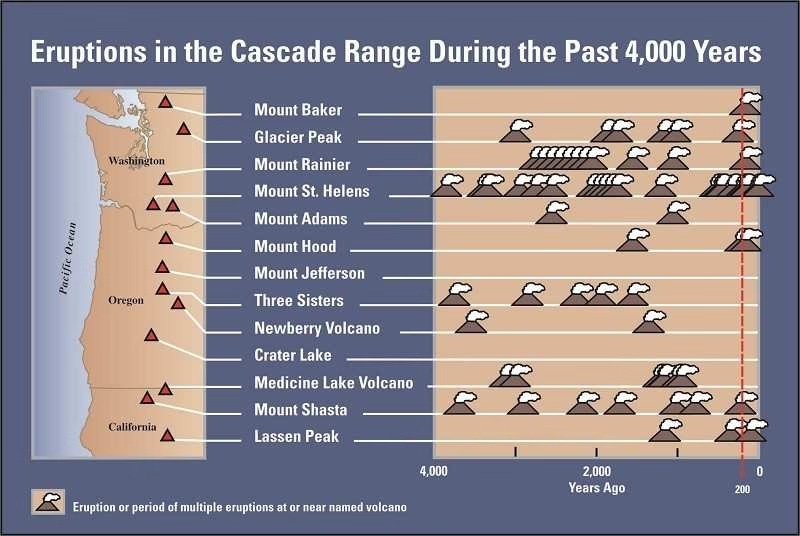
Recent advancements in seismic Activity monitoring of the Cascade Range volcanoes in Washington and Oregon have enhanced the ability to track and assess volcanic activity. This article provides an overview of the current state of monitoring systems and technologies employed to ensure public safety and understand volcanic hazards.
Cascade Range Seismic Monitoring Network
The Pacific Northwest Seismic Network (PNSN) is the primary agency responsible for tracking seismic activity in the Cascade volcanoes. In collaboration with the Cascade Volcano Observatory (CVO), part of the U.S. Geological Survey (USGS), PNSN monitors seismic events and evaluates volcanic hazards throughout the region. These organizations work closely to provide continuous updates on the behavior of volcanoes like Mount St. Helens and Mount Rainier, offering real-time seismic data to the public.
PNSN operates a dense network of seismic stations, which plays a vital role in detecting and understanding volcanic unrest. These stations provide critical data on earthquake frequency and location, helping scientists to assess the likelihood of eruptions and other volcanic phenomena.
Technological Advances in Seismic Data Interpretation
Recent advances in seismic monitoring technology have greatly improved the interpretation of volcanic activity. The monitoring systems now integrate both automatic and manual data analysis to detect early signs of potential eruptions. Seismic signals, such as low-frequency volcanic earthquakes, are analyzed to gauge magma movement and identify possible threats.
Improved data visualization tools, such as plots that track earthquake depth over time, offer valuable insights into volcanic behavior. These visualizations reveal trends that help scientists monitor changes in earthquake frequency and depth—key indicators of rising magma, although not every seismic event necessarily leads to an eruption.
Public Safety and Monitoring for Volcanic Eruptions
Thanks to state-of-the-art seismic monitoring systems, residents of Washington and Oregon can feel confident that experts are constantly tracking potential volcanic hazards. The PNSN and CVO provide up-to-date information on seismic activity, ensuring that the public remains informed about any significant changes in volcanic behavior.
In addition to seismic data, the CVO monitors other critical volcanic parameters, such as gas emissions and ground deformation. These factors, combined with seismic readings, create a comprehensive picture of volcanic activity, helping to predict potential eruptions more accurately and effectively.
The Future of Cascade Volcano Monitoring
The future of volcanic monitoring in the Cascade Range looks promising, with continuous improvements in data processing, seismic technology, and volcano hazard assessment. As these monitoring systems become even more sophisticated, they will continue to enhance public safety by providing early warnings of volcanic activity and improving our understanding of volcanic systems.
Conclusion
In conclusion, the Cascade volcanoes are under vigilant surveillance, thanks to advanced seismic monitoring technology and comprehensive data analysis. This ongoing monitoring, which includes both seismic signals and other geophysical data, ensures that residents and authorities can take appropriate action in the event of volcanic activity, safeguarding lives and property.
For more detailed information, visit the Pacific Northwest Seismic Network (PNSN) and the Cascade Volcano Observatory (CVO) websites.
